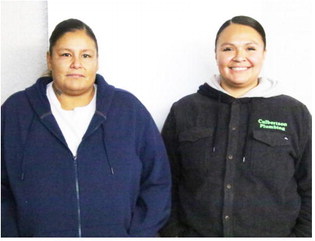Wildlife Crossing License Plate Revealed


Montana drivers can now sport a new specialty license plate that will help fund wildlife connectivity and vehicle- animal collision risk reduction programs throughout the state.
Kylie Bute, a recent graduate of Gallatin High School designed the artwork for the specialty plate, winning a contest organized by the Theodore Roosevelt Conservation Partnership along with Montana Fish, Wildlife and Parks and the Montana Department of Transportation and several other conservation groups in the state.
“My passion for art has always been about telling stories, and this design is a way to spread awareness of the importance of wildlife conservation and movement,” Bute, said in a press release. “I’m deeply appreciative and proud to know that my artwork will soon be on vehicles across our great state, helping Montanans connect with the incredible wildlife that surrounds us.”
Bute’s design — a bull elk standing on the edge of a wildlife overpass with mountains in the background — will help fund the newly established Big Game and Wildlife Highway Crossings and Accommodations through FWP.
“Meaningful conservation efforts take all of us working together,” FWP Director Christy Clark said in a statement. “This is a great example of how state agencies and conservation organizations can partner with community groups to find unique ways to help protect wildlife migration and provide for public safety.
The account, and license plate idea, stems from a law passed during the 2025 Legislature to help FWP and MDT research, design, build and maintain wildlife crossing structures, such as overpasses, underpasses, culverts and fencing.
House Speaker Pro Tempore Katie Zolnikov, a Billings Republican, introduced the bill, which is aimed at lowering the high rate of collisions with wildlife Montana drivers are part of each year.
Gov. Greg Gianforte held a ceremonial signing for the bill in August, and companion legislation, in August near the Jens exit of I-90, where MDT completed a fencing project to push elk into an underpass rather than across the interstate.
Data analyzed by State Farm Insurance shows collisions with wildlife contribute to more than 10 percent of all car accidents in Montana, making Big Sky Country the second-highest risk state, and surveys have shown that 70 percent of Montana drivers have been involved in a collision with wildlife.
Numerous studies have shown that wildlife fencing, crossings, and associated structures greatly reduce wildlife collisions, including up to 80 percent for large wildlife overpasses, such as the “Animals’ Trail,” a 197-footwide vegetated bridge that spans U.S. Highway 93 near Gray Wolf Peak Casino at the southern end of the Flathead Indian Reservation.
“Montana’s big game migrations are iconic, and safe highway crossings are essential for wildlife and drivers alike,” Ryan Chapin, Montana field manager for the Theodore Roosevelt Conservation Partnership said. “We applaud MT FWP for establishing this wildlife movement specialty plate and congratulate Kylie Bute on her winning design which will soon be proudly displayed on vehicles across our great state.”
National Wildlife Federation, Greater Yellowstone Coalition, Glacier-Two Medicine Alliance, Vital Ground Foundation, and Montanans for Safe Wildlife Passage also supported the Montana Big Game and Wildlife Highway Crossings License Plate Artwork Contest. Montana U.S. Rep. Ryan Zinke announced on Tuesday, Nov. 12, that he had introduced legislation in Congress to make a federal Wildlife Crossings Program, permanent and extend funding through 2031.
“Wildlife crossings save lives and are good for healthy herds,” Zinke said in a press release. “As the Secretary of the Interior, I launched the first federal effort to protect big-game migration corridors and dedicate federal dollars to crossings in the west. This bill locks in the progress we started, keeps the funding flowing to the states and tribes that need it most, and ensures Montana families don’t have to risk their lives or lose the wildlife we all cherish driving to work or school.”
The program, currently considered a pilot project administered by the Federal Highway Administration, provides grant funding to state and tribal governments to construct wildlife crossings.
In 2023, the CSKT received an $8.6 million grant through the program to construct a wildlife overpass spanning U.S. 93 within the Ninepipe National Wildlife Management Area, along with an additional $74.9 million grant in 2024 for reconstruction and safety improvement work along the highway corridor which was slated to include numerous wildlife crossing structures.
However, the Trump administration’s “Big Beautiful Bill” rescinded much of the funding, leading MDT to scale down improvement projects along U.S. 93.
Improvements near the intersection of U.S. 93 and Eagle Pass Trail, which include a wildlife overpass, shareduse path, new turn-lane, and widened shoulders are still planned for construction in 2027, according to the department.
In addition, the Post Creek Hill project is scheduled to begin construction in 2026, though MDT says construction costs now exceed available funding. Planned improvements include a northbound truck climbing lane at Post Creek Hill and a new bridge over Post Creek that facilitates wildlife movement.
The Wildlife Road Crossings Program Reauthorization Act of 2025 would turn the program from a pilot program to a permanent one; extend funding through 2031; provide 100% federal cost share for projects led by Tribal governments; created a Tribal technical assistance program; and caps administrative costs. The bill is co-sponsored by Democratic Rep. Don Beyer of Virginia, who said in a press release that wildlife crossing structure are “proven solutions” that will save lives.


